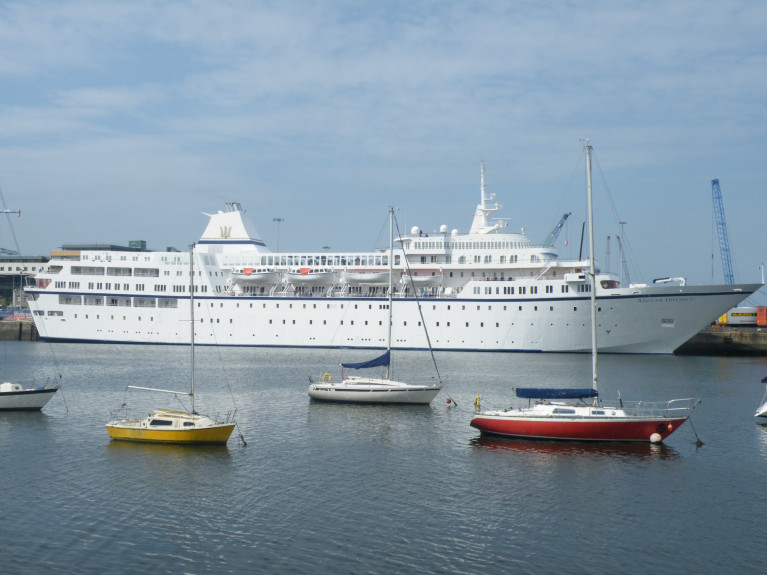A former Israeli ro-ro freight ferry now operating as an 'educational' adults-only cruiseship, had in the early hours of this morning called to Dublin Port and notably will remain in the capital for the next five days, writes Jehan Ashmore.
Aegean Odyssey had been in the Port of Cork since Wednesday when alongside at the city centre's Horgan's Quay. The ship then sailed yesterday to Dublin Port with an arrival some three hours after midnight.
The former ro-ro ferry Narcis built for Zim Navigation of Haifa, Isreal, aptly moored in the capital alongside the P&O Ferries terminal on the North Wall Extension beside the Tom Clark (East Link) Toll-Bridge.
Since 2020, Aegean Odyssey has been on a three-year charter to Road Scholar, a not for profit US-based organization which operates educational experiences voyages. Joining the passengers are faculty experts carefully selected for the Road Scholar learning adventure programmes that they lead.
These programme voyages often involve Aegean Odyssey make visits in port for a few days in addition as the ship is just 11,902 gross tonnage, this enables access to smaller ports.
As alluded in this current call to Dublin, Aegean Odyssey is to stay in port for the next five days until Wednesday, this compares starkly to a standard cruisehip call which generally involves a dawn arrival and an early evening or late night departure.
The Boston based RoadScholar claim on their website that their voyages are 20% to 30% below the cost of most commercial cruises.
Further research shows that 19 cruises or educational 'programmes' are scheduled for this year, for example the 'Ancient Wonders' voyage taking in Greece, Turkey, Israel and Egypt. This programme voyage starts at $5,699 which include 17 days/16 nights and 44 meals with free airfares from selected cities.
For added comfort, passenger capacity on these Educational Voyages has been reduced from 570 to 380. This in order to facilitate more spacious accommodation with the cinema removed in favour of a lecture hall (or live lectures can be tuned into cabin TV's) in addition to new dining areas installed.
Afloat has identified further facilities among them the Marco Polo Restaurent which is located on the Venetian explorer's namesake deck, one of seven passenger decks of the veteran vessel which at almost 50 years old continues to serve.
Originally, the ship's career was that of a freight ferry Narcis built for Zim Navigation in 1973 by Santierul Naval Galați, a shipyard in Galați, Romania.
During the decades the ship has had several renamings and owners, among them, Dolphin Hellas Cruises which sent the ship to to Perama, Greece for conversion into a cruise ship which took place in 1988.
For the cruiseship role, there's the customary lido pool which forms as part of the extensive conversion work which cost $26m. During the drydocking work this also saw the ship lengthened by 29 metres.
Further rebuilding work took place in 2010, which combined has given the ship a rather angular appearance notably at the stern with open viewing decks.
Up until recent years the cruiseship for a decade was operated by UK based, Voyages to Antiquity which served a career between 2009 and 2019.































































